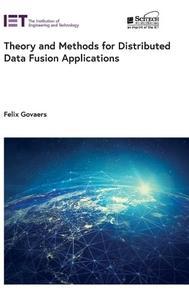|
|

Free Download Theory and Methods for Distributed Data Fusion Applications (Radar, Sonar and Navigation) by Felix Govaers
English | September 5, 2023 | ISBN: 1839534397 | 215 pages | MOBI | 11 Mb
With the rise of digitalization, AI and modern data communication, engineering is increasingly challenged by the complexity of systems-of-systems, in which perception sensors have their own processing mechanism, information is merged at some centric entity, and cross-platform exchange of data is conceptualized in a holistic approach. Therefore, distributed architectures for data fusion, state estimation, and multi target tracking have been becoming increasingly important. The use of multiple sensors to perceive and compute the situational awareness picture leads to the generation of vast amounts of data, which need to be filtered, enriched, interpreted, and evaluated. This becomes infeasible without the notion of distributed algorithms.
Theory and Methods for Distributed Data Fusion Applications first covers the fundamentals of stochastic motion, which constitutes the underlying models in target tracking and parameter estimation. The next chapter exposes the most important basic target tracking and state estimation algorithms and in the next those methods are extended to the estimation of full trajectories with states from multiple time stamps. Then the book introduces the problem of distributed fusion and presents first solutions to it. Then the final 3 chapters cover track fusion methods with unknown cross covariances, the Distributed Kalman Filter and its variants and finally methods for track-to-track association.
This book is designed to provide state-of-the-art approaches and algorithms to the interested engineer for data fusion in distributed systems providing a profound understanding of the constraints, assumptions, benefits, and drawbacks. To this end, the derivation of each method is given in detail without omitting auxiliary calculations or intermediate steps.
Links are Interchangeable - Single Extraction |
|